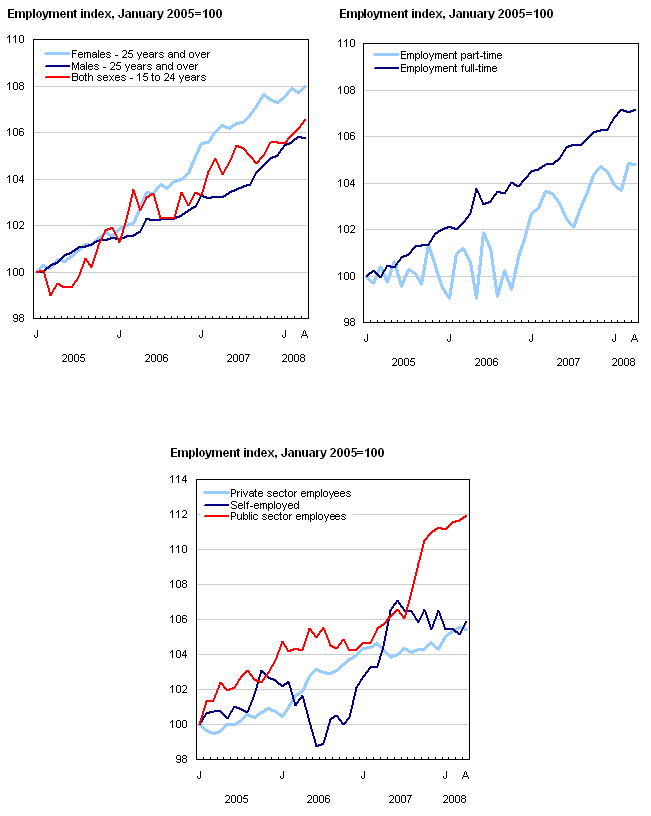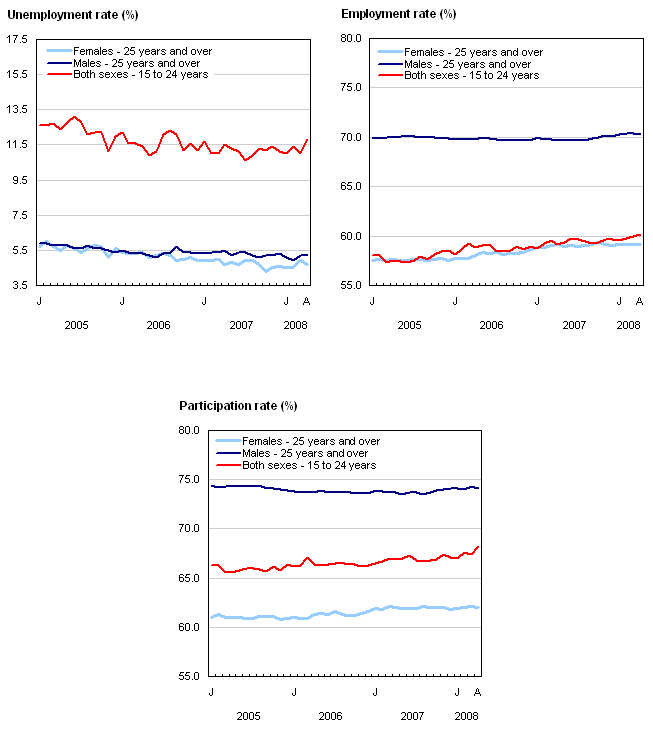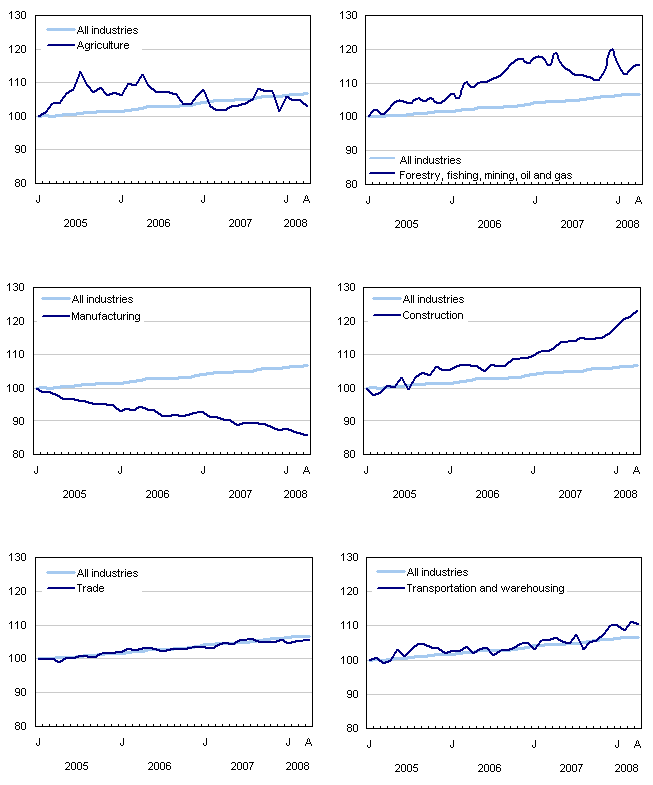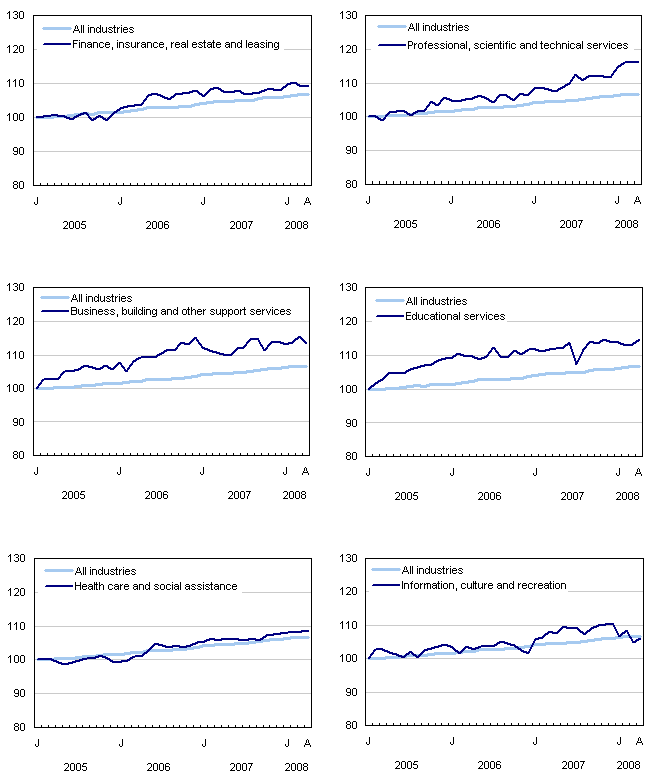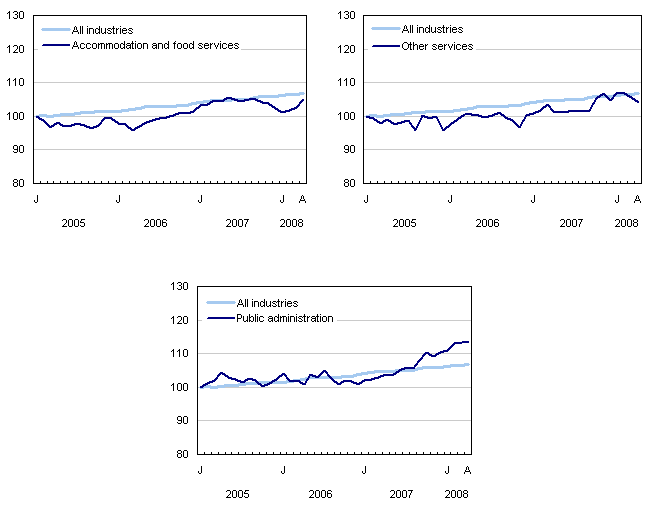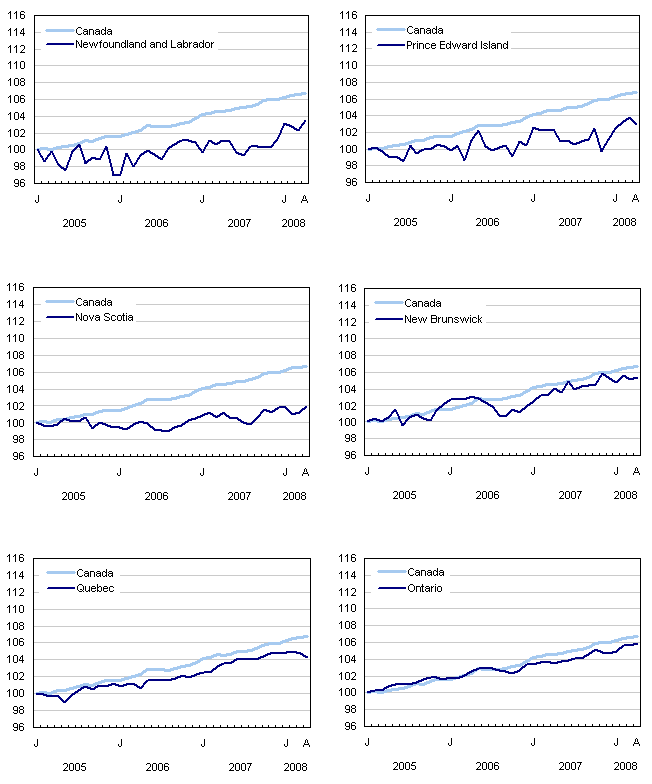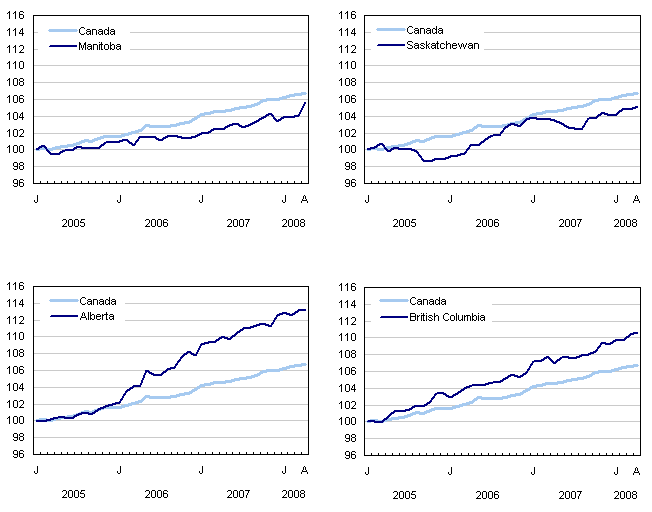Common menu bar links
Not for release before 7 A.M. E.D.T. Friday, May 9, 2008
April 13 to 19, 2008
Archived Content
Information identified as archived is provided for reference, research or recordkeeping purposes. It is not subject to the Government of Canada Web Standards and has not been altered or updated since it was archived. Please "contact us" to request a format other than those available.
Analysis — April 2008
Employment edged up slightly in April (+19,000), similar to the increase observed in March. This follows large gains at the start of the year. The unemployment rate nudged up to 6.1% in April as more people entered the labour force. Self-employment and full-time work accounted for all of the gains in April.
Over the past 12 months, employment increased by an estimated 348,000 (+2.1%), with full-time growing twice as fast as part-time. The employment rate – the share of the working-age population who are employed – continued to hover around a record high in April.
Adjusted for comparability with the United States, the employment rate increased 0.5 percentage points over the last 12 months, reaching 64.5% in April 2008. This contrasts with the United States, where the rate fell 0.3 percentage points to 62.7% over the same period. Employment in construction and financial activities has declined in the United States while these industries, especially construction, have added employment in Canada over the past 12 months. Both countries, however, have experienced pronounced employment declines in manufacturing.
In April, employment increased in accommodation and food services, as well as construction. Over the past 12 months, the construction industry led employment growth, adding 113,000 workers.
Manufacturing continued its decline in April, with losses in Ontario and British Columbia. Overall, the number of factory workers has decreased by 112,000 since April 2007.
While there were small employment increases across most of the country, Manitoba was the only province with strong growth in April. Quebec, on the other hand, was the only province to experience a loss for the month.
Year-over-year growth in average hourly wages was 4.3% in April, slightly lower than earlier in the year, but continuing well above the most recent increase in the Consumer Price Index (+1.4%). Provincially, the strongest wage growth has been in Newfoundland and Labrador, Saskatchewan and Alberta.
Employment gains in accommodation and food as well as construction
With gains in Ontario, Alberta and British Columbia, accommodation and food services continued to add employment in April (+22,000). These recent increases offset losses observed towards the latter part of last year.
Construction employment continued on its upward trend in April (+16,000). This brings employment gains over the last 12 months to 113,000 (+10.1%), the largest of any industry.
Manufacturing employment edged down in April, continuing the downward slide that began towards the end of 2002. Over the last 12 months alone, employment fell by 112,000, with nearly half the losses in Ontario (-50,000) and the remainder mainly in British Columbia (-29,000), Quebec (-13,000) and Alberta (-11,000).
Manitoba adds employment in April
In April, employment increased by an estimated 9,000 in Manitoba, boosting employment growth over the past 12 months to 3.1%. The added employment in April pushed the unemployment rate down 0.5 percentage points to 3.8%, the second lowest in the country after Alberta. Manitoba’s employment and participation rates both attained all-time highs in April.
Employment in Ontario edged up 12,000 in April, mainly among younger workers, bringing growth since April 2007 to 2.2%, just above the national average. Increases over this period occurred in construction as well as several service industries. However, the downward trend in manufacturing employment continued, with a decline of 15,000 in April.
Newfoundland and Labrador experienced an employment gain in April (+2,400), continuing the upward trend which started last summer, bringing its employment rate to a record high of 52.6%. Over the last 12 months, employment has increased by 2.3%, with growth stemming from construction, professional, scientific and technical services as well as public administration.
In Alberta and British Columbia, the continued strength of the labour market resulted in record high employment rates in April for both provinces. Employment growth in British Columbia and Alberta over the last 12 months has been above the national average, at 3.4% and 3.0% respectively. In April, there was little change in employment in both provinces.
Employment in Quebec fell by an estimated 20,000 in April, mostly among youths, pushing the unemployment rate in the province up 0.3 percentage points to 7.6%. This is the first significant employment decline in two years. There were fewer people working this April in a number of service industries and in agriculture. The decrease leaves employment in the province up only 0.7% (+27,000) above the level of 12 months ago.
More adult women working
Women aged 25 and over were the only demographic group to experience employment growth in April (+17,000), once again keeping their unemployment rate below that of adult men (4.7% versus 5.2%). Despite this month’s increase, the rate of employment growth for adult women since April 2007 (+1.6%), was below that of adult men (+2.4%).
Note to readers
The Labour Force Survey estimates are based on a sample, and are therefore subject to sampling variability. Estimates for smaller geographic areas or industries will have more variability. For an explanation of sampling variability of estimates, and how to use standard errors to assess this variability, consult the Data Quality section in this publication.
The 2007 Labour Force Historical Review on CD-ROM (71F0004XCB, $209) is now available.
